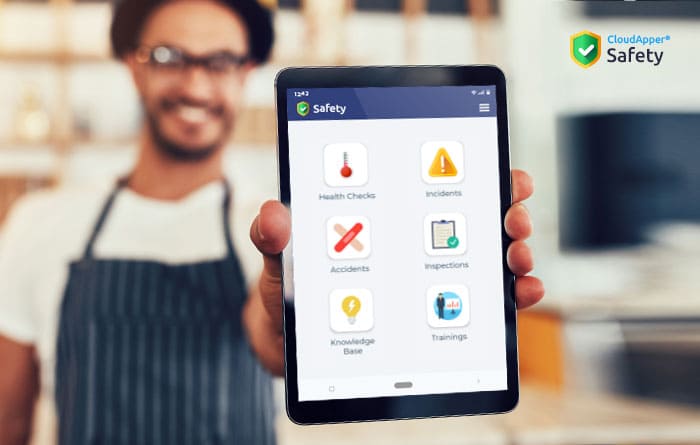Table of Contents
Workplace safety incidents are not uncommon, especially in construction, maritime, and even the general industries. Whenever such a case occurs, it needs to be recorded, and during the inevitable inspection, the OSHA official(s) will ask whether the affected worker received safety training or not. OSHA has been around for a long time, and it has always advocated how safety training can reduce workplace incidents significantly and ensure compliance. That being said, let’s take a look at OSHA safety training requirements, why it’s so crucial, and some tricks and tips to ensure effective training is provided to all employees.
OSHA training requirements in a nutshell
Some states have additional requirements
Since OSHA is a regulatory agency that works to ensure health and safety in the workplace for US organizations, it has several states and industries to cover. Some states implement Federal OSHA’s regular training standards, whereas others have additional requirements of their own.
Many of the fifty US states are using Federal OSHA’s training standards, where OSHA 10 and OSHA 30 are voluntary training programs for employers. However, some states have made these programs mandatory for organizations.
Connecticut, New York, Massachusetts, Missouri, Rhode Island, and New Hampshire – all of them require OSHA 10 Training for publicly funded projects. Nevada, on the other hand, mandates it for everyone and at least once every five years, whereas mandating OSHA 30 Training for every manager once every five years – for all the jobs.
Maryland has additional heavy equipment training requirements, whereas California’s requirements include the Injury and Illness Prevention Program as well as the Heat Illness Prevention Plan for both construction and agricultural employees. You can learn more about OSHA training here.
With that out of the way, let’s take a look at the general OSHA safety training requirements.
Common training requirements
OSHA has been a longstanding believer in training and how it is crucial to improve worker safety – preventing injuries and illnesses. It also understands that not all industries are the same, and thus, it has varying training requirements for agriculture, construction, general, and maritime industries.
The safety training standards outline:
- Which workers require training.
- What tasks or topics to cover during training.
- The minimum qualifications of the trainer.
- Training documentation requirements.
As previously mentioned, some states have additional training requirements. However, the most common ones for all of the states and industries are as follows:
- Every worker must receive training regarding the tasks, scenarios, and tools regarding the job.
- While there is no specific minimum number of training sessions stated, adequate sessions must be provided to ensure workplace safety.
- A qualified trainer must provide the training sessions and they must be in a common language easily understood by the employees.
- All training sessions need to be documented – something that CloudApper Safety can help with.
OSHA clearly knows how important safety training is. For instance, it knows that a worker with no safety training will very likely face injuries or illnesses down the line, compared to one that has received safety training, as the latter is well-versed regarding the do’s and don’ts of the job. Even with other robust safety measures in place, training is still necessary – it is a crucial requirement for enhancing employee safety.
With the common OSHA safety training requirements and the importance of training out of the way, let’s explore the requirements regarding training documentation.
OSHA Requirements about training documentation
OSHA basically requires employers to:
- Ensure training recordkeeping regarding the courses and attendance for at least three years unless specified otherwise.
- Use competent trainers.
- Make it understandable for workers.
About safety training documentation, organizations can go for either hard copies, digital records, or both. However, going with paperwork will also bring disadvantages such as a huge administrative burden, the possibility of losing documentation, and not finding the appropriate documents on time. Paper records are harder to locate, which is why going paperless makes so much more sense, and this is where CloudApper Safety, a robust OSHA recordkeeping software, can help.
Training documentation is much easier with CloudApper Safety, as it stores all the information in a centralized location, making it easier to update and providing consistency across teams. Moreover, searching for training documentation is fast so that records can easily be presented during OSHA inspections – saving time and reducing the administrative burden.
Now, let’s take a look at some practices that can help provide better workplace safety training.
Some tips and tricks to provide competent safety training
Keep in mind that these are not requirements by OSHA – these are some suggestions that can improve your training program:
- Check for the best safety training practices available within your industry.
- Take your time to come up with a concrete training plan.
- Ensure that the training program(s) meets your and your employees’ needs.
- Use qualified trainers.
- Use credible training materials.
- Make it easily accessible and understandable for the workers.
- Ensure employee engagement during the training.
- Don’t overburden trainers – assign a small number of trainees per trainer.
- Ensure proper recordkeeping – use a reliable solution like CloudApper Safety.
That was just training – there’s more to OSHA
We’ve already talked about OSHA training requirements in a nutshell, but it seemed quite lengthy, didn’t it? That’s because OSHA provides a vast number of rules and regulations for employers, and it can get pretty overwhelming for many. This article was a simple overview of the OSHA safety training standards – there are far more in-depth articles that can be quite confusing. Naturally, OSHA compliance can become an administrative burden, and if not ensured, then costly violations and fines will be the consequences. That’s where CloudApper Safety comes in.
A reliable OSHA recordkeeping app that can simplify compliance, CloudApper Safety ensures incident management, a knowledge base, training management, and more, right from worker’s smartphones. Simplify OSHA compliance now with CloudApper Safety.
What is CloudApper AI Platform?
CloudApper AI is an advanced platform that enables organizations to integrate AI into their existing enterprise systems effortlessly, without the need for technical expertise, costly development, or upgrading the underlying infrastructure. By transforming legacy systems into AI-capable solutions, CloudApper allows companies to harness the power of Generative AI quickly and efficiently. This approach has been successfully implemented with leading systems like UKG, Workday, Oracle, Paradox, Amazon AWS Bedrock and can be applied across various industries, helping businesses enhance productivity, automate processes, and gain deeper insights without the usual complexities. With CloudApper AI, you can start experiencing the transformative benefits of AI today. Learn More




























